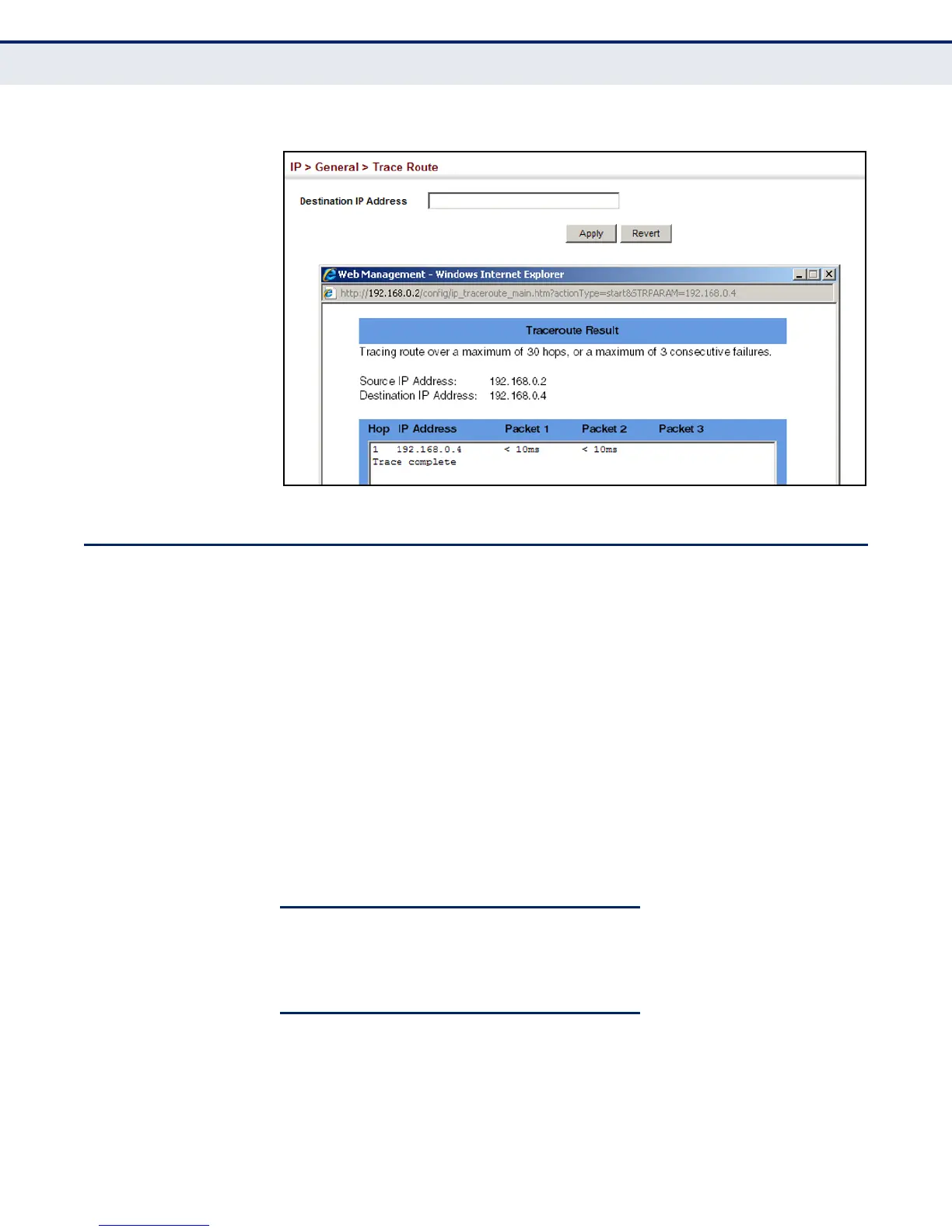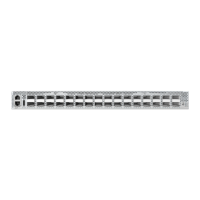C
HAPTER
15
| IP Configuration
Address Resolution Protocol
– 564 –
Figure 326: Tracing the Route to a Network Device
ADDRESS RESOLUTION PROTOCOL
The switch uses Address Resolution Protocol (ARP) to forward traffic from
one hop to the next. ARP is used to map an IP address to a physical layer
(i.e., MAC) address. When an IP frame is received by this switch (or any
standards-based switch/router), it first looks up the MAC address
corresponding to the destination IP address in the ARP cache. If the
address is found, the switch writes the MAC address into the appropriate
field in the frame header, and forwards the frame on to the next hop. IP
traffic passes along the path to its final destination in this way, with each
routing device mapping the destination IP address to the MAC address of
the next hop toward the recipient, until the packet is delivered to the final
destination.
If there is no entry for an IP address in the ARP cache, the switch will
broadcast an ARP request packet to all devices on the network. The ARP
request contains the following fields similar to that shown in this example:
When devices receive this request, they discard it if their address does not
match the destination IP address in the message. However, if it does
match, they write their own hardware address into the destination MAC
address field and send the message back to the source hardware address.
When the source device receives a reply, it writes the destination IP
Table 37: Address Resolution Protocol
destination IP address 10.1.0.19
destination MAC address ?
source IP address 10.1.0.253
source MAC address 00-00-ab-cd-00-00

